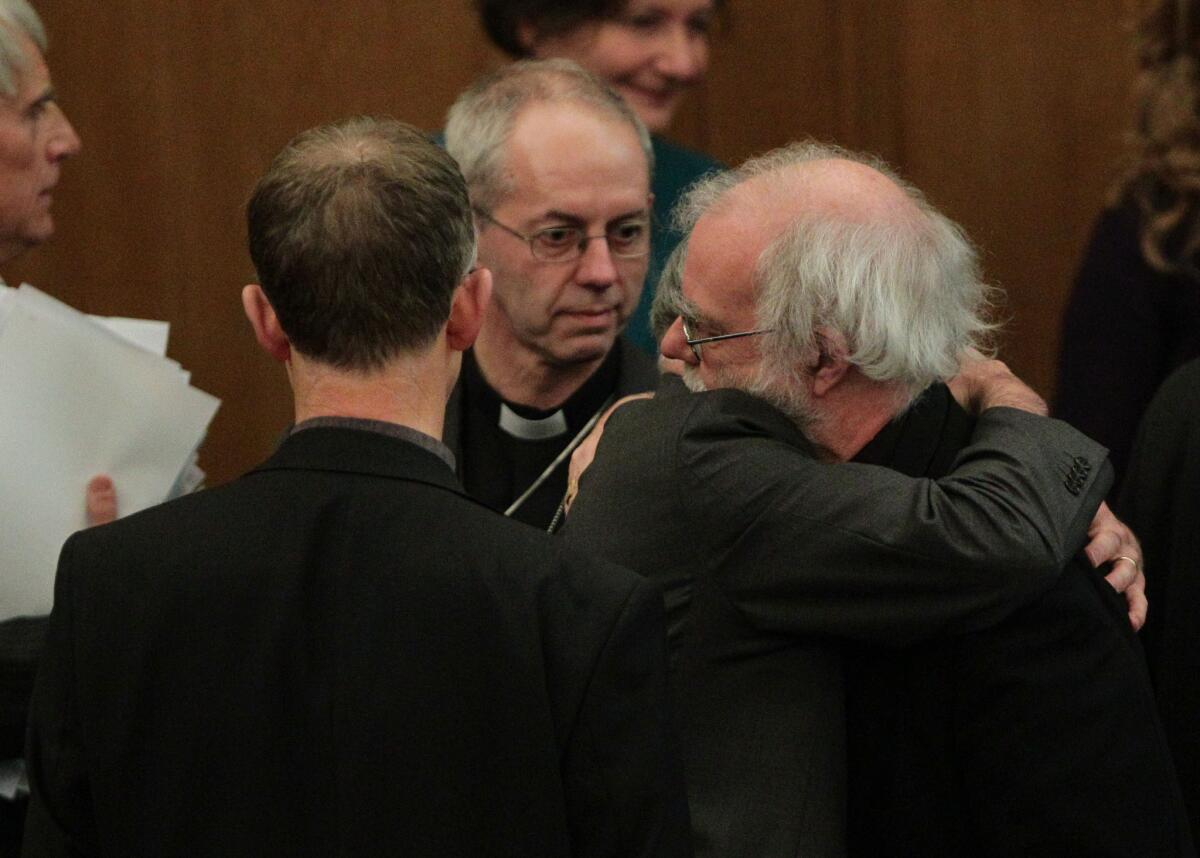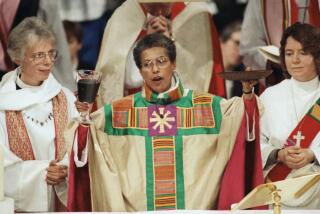Church of England votes against having female bishops

LONDON -- The Church of England Synod on Tuesday voted down a measure to consecrate women as bishops, ending for now 12 years of debate on a question that has caused deep divisions between traditionalists and liberals and caused some members to flee to the Roman Catholic Church.
The 470 participants of the annual synod were divided into three houses – bishops, clergy and laity, with a two-thirds majority in each house needed to pass the resolution. While a wide majority of bishops and clergy voted in favor, the laity vote, 132 to 74, caused the motion to just fall short of approval.
Reintroducing the measure, which came 20 years after the ordination of the first female priest, could take up to five years.
The vote came on the second day of the Synod of Anglican clergy and laity, which meets yearly to take stock and discuss measures and church policy. The session, chaired by presiding Archbishop of York John Sentamu, saw impassioned debate with more than 100 delegates from all three sections voicing their views.
The measure was supported by the church’s bishop, Archbishop of Canterbury Rowan Williams, and his recently appointed successor, Durham Bishop Justin Welby, who’ll take the post early next year.
Welby declared that female priests have played a powerful role in the church except as bishops and “it is time to finish the job and vote for this measure.”
It was also time for the Church of England, he said, to “show how to develop the mission of the church in a way that demonstrates that we can manage diversity of view without division.”
Williams said he had “hoped and prayed” that the issue “would be at another stage before I left,” adding it was a “ deep personal sadness that that is not the case.”
The turbulent issue will be one of the first problems facing the new archbishop of the church, whose titular leader is ironically a woman: Queen Elizabeth II.
The measure was first introduced in 2000 and went through years of debate and amendments before reaching this week’s synod.
Opponents variously challenged the authority of the church to change the nature of the hierarchy and argued that the role of women was complementary but not equal to that of men.
One cause for controversy was a clause allowing for parishes or parish councils opposed to women as bishops “on grounds of theological conviction” to ask for a male priest to be appointed as incumbent for the role of bishop.
After the vote, the Rev. Graham Jones, bishop of Norwich, told the BBC that the synod as a whole voted overwhelmingly for the motion. He said the two-thirds majority rule was a “high barrier” but ensured the church carried as many people with it as possible in support of the measure.
“What is difficult is that it feels incredibly disappointing, not least for women clergy themselves,” he said.
Mike Hill, bishop of Bristol, posted his disappointment on his diocese’s website: “In a culture that celebrates democracy, it does seem strange that a clear minority has managed to influence the debate and elected representatives in such a way.”
ALSO:
Disputed islands belong to Colombia, court rules
Obama sends Hillary Clinton to Mideast to seek Gaza truce
Key figures in phone-hacking scandal to be charged with bribery
More to Read
Sign up for Essential California
The most important California stories and recommendations in your inbox every morning.
You may occasionally receive promotional content from the Los Angeles Times.










